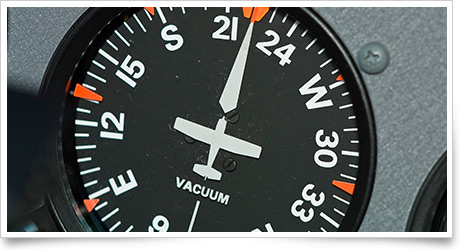Custom content for the Sept. 21, 2012, issue of 'AOPA ePilot' newsletter
| The following stories from the Sept. 21, 2012, edition of AOPA ePilot were provided to AOPA members who expressed an interest in the particular subject areas. Any AOPA member can receive information tailored to their areas of interest by updating their preferences online |
training tipsThe three axes
When visualizing (or explaining) these motions of the aircraft, think of your control inputs as inducing aircraft response around an appropriate axis. Take that stall that has begun to progress toward a spin. There is rotation around the vertical axis (sometimes referred to as the yaw axis). That is why applying full opposite rudder (not aileron) is the crucial element of a standard spin recovery.
“The axes of an aircraft are three imaginary lines that pass through an aircraft’s center of gravity (CG),” explains Chapter 4 of the Pilot’s Handbook of Aeronautical Knowledge. “The axes can be considered as imaginary axles around which the aircraft turns. The three axes pass through the CG at 90-degree angles to each other.”
The names of the three axes lend clarity to ground discussions of a maneuver. “The axis from nose to tail is the longitudinal axis, the axis that passes from wingtip to wingtip is the lateral axis, and the axis that passes vertically through the CG is the vertical axis,” the chapter explains. “Whenever an aircraft changes its flight attitude or position in flight, it rotates about one or more of the three axes.”
Movement around one or more of the axes is essential to the operating principle of your trainer’s gyroscopic instruments. This Flight Training article explains how those instruments harness gyros spinning in various axes to present information to the pilot.
Does your trainer have a turn coordinator, or a turn-and-bank indicator? Differences in how their gyros are aligned relative to the longitudinal axis give one of them more sensitivity.
Which one? Peruse this “What it looks like” column for the answer. training productsASA updates multiengine exam guideASA’s Multi-Engine Oral Exam Guide has been updated to include the latest regulations, procedures, and technology. The guide uses a question-and-answer format and provides succinct responses to the questions that designated pilot examiners are most likely to ask, according to ASA. Following each question is a reference to the specific FAA source from which the answer is derived. The book can be purchased in soft-cover version at $12.95 or as an e-book at $9.95. See the website to order or call 800/272-2359.
Note: Products listed have not been evaluated by ePilot editors unless otherwise noted. AOPA assumes no responsibility for products or services listed or for claims or actions by manufacturers or vendors. final examQuestion: I obtained my private pilot certificate with single-engine airplane privileges and would now like to add the multiengine airplane rating to my certificate. Which part of the FAA regulations would I need to comply with?
Answer: Because you have already met the basic 40-hour requirement for the private pilot certificate, you would not be required to go through these same requirements again for the multiengine rating. The regulation to review and comply with is FAR 61.63(c). This regulation requires the applicant to obtain flight training from an authorized instructor to become proficient for the FAA practical test. Although there are not any specific hour requirements, FAR 61.39(a)(6)(i) states that applicants must have received training within two calendar months preceding the month of application in preparation for the practical test. A knowledge test is not required. For more on additional ratings and endorsements, see AOPA’s subject report.
Got a question for our technical services staff? Email [email protected] or call the Pilot Information Center, 800/872-2672. Don’t forget the online archive of “Final Exam” questions and answers, searchable by keyword or topic. |
 A student pilot learns that an aircraft is capable of three kinds of motion:
A student pilot learns that an aircraft is capable of three kinds of motion: 

